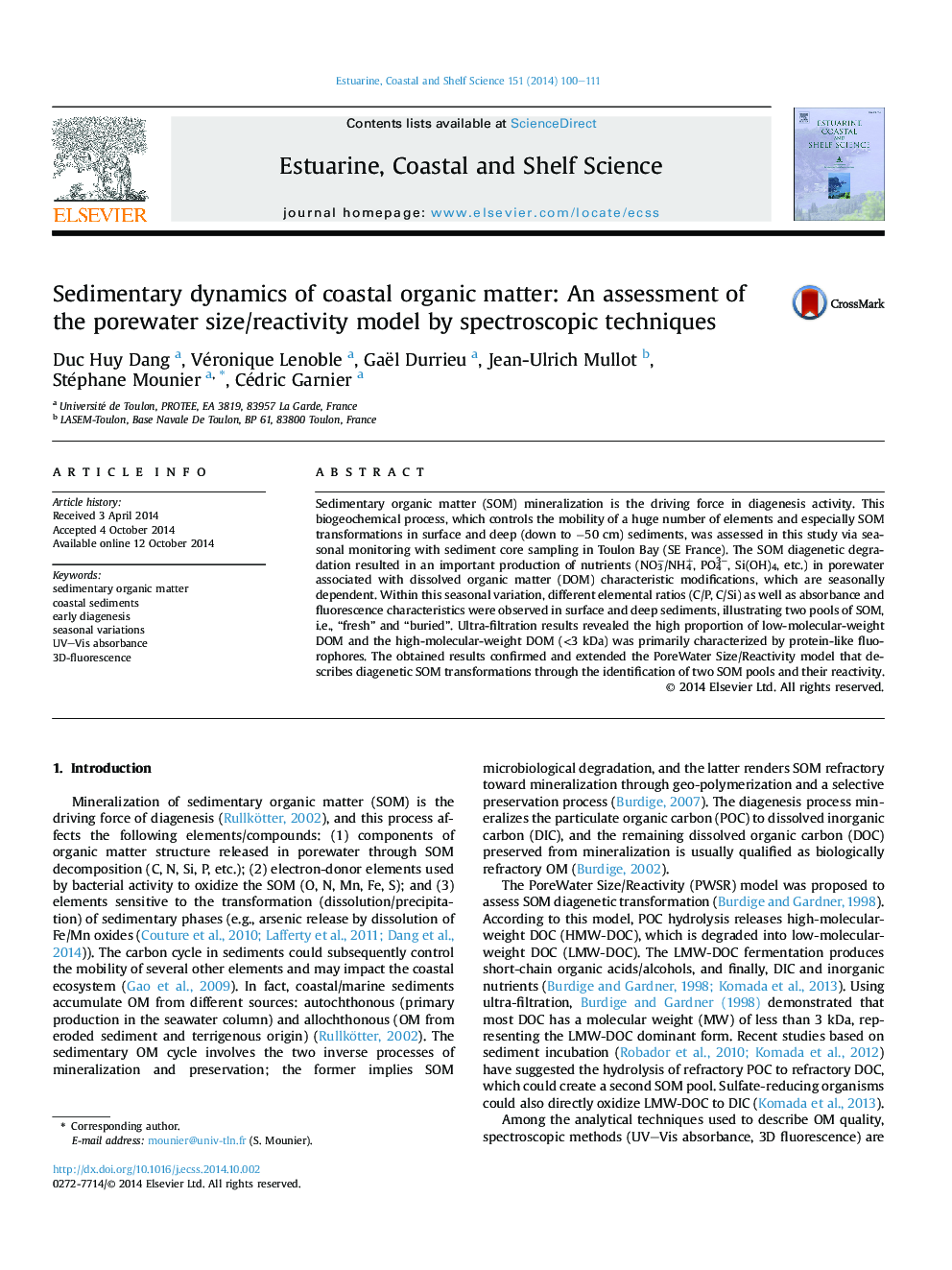| Article ID | Journal | Published Year | Pages | File Type |
|---|---|---|---|---|
| 6384788 | Estuarine, Coastal and Shelf Science | 2014 | 12 Pages |
Abstract
Sedimentary organic matter (SOM) mineralization is the driving force in diagenesis activity. This biogeochemical process, which controls the mobility of a huge number of elements and especially SOM transformations in surface and deep (down to â50 cm) sediments, was assessed in this study via seasonal monitoring with sediment core sampling in Toulon Bay (SE France). The SOM diagenetic degradation resulted in an important production of nutrients (NO3â/NH4+, PO43â, Si(OH)4, etc.) in porewater associated with dissolved organic matter (DOM) characteristic modifications, which are seasonally dependent. Within this seasonal variation, different elemental ratios (C/P, C/Si) as well as absorbance and fluorescence characteristics were observed in surface and deep sediments, illustrating two pools of SOM, i.e., “fresh” and “buried”. Ultra-filtration results revealed the high proportion of low-molecular-weight DOM and the high-molecular-weight DOM (<3 kDa) was primarily characterized by protein-like fluorophores. The obtained results confirmed and extended the PoreWater Size/Reactivity model that describes diagenetic SOM transformations through the identification of two SOM pools and their reactivity.
Keywords
Related Topics
Physical Sciences and Engineering
Earth and Planetary Sciences
Geology
Authors
Duc Huy Dang, Véronique Lenoble, Gaël Durrieu, Jean-Ulrich Mullot, Stéphane Mounier, Cédric Garnier,
